In this article, we’ll learn about a successful farmer who organically grew Red Globe Grapes and made a lot of money. Below, you can read about Mr. Keshava’s success, how he grows Red Globe Grapes, how much money he makes, and how much he has to invest in growing organic pomegranates.
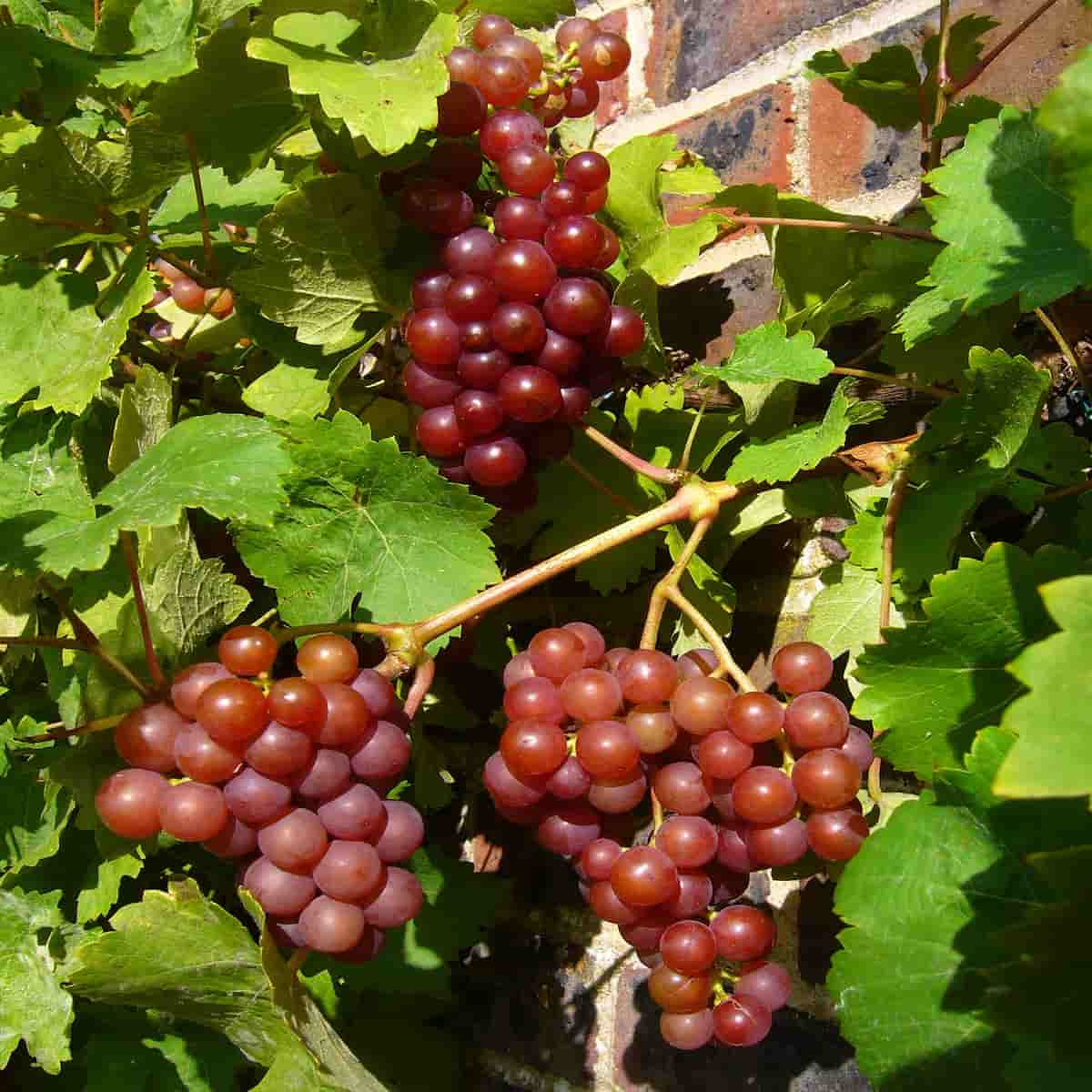
How this farmer making 60 lakhs from 6 acres organic grape farm
How do you grow red globe grapes?
Find a spot with good drainage that can accommodate grapevines. The best location would be the south side of the building. Grapevines need at least three feet of genuine soil above any rock or hardpan layers and seven to eight hours of sunshine every day. Compost should be worked into the soil for a depth of 2 inches within 10 feet of each planting area, or raised beds could be used. The recommended distance between grapevines in a vineyard is 6-8 feet.
The recommended distance between rows when planting in rows is 8-10 feet. Whether it’s a fence, an arbor, or a trellis, make sure your vines have something to climb on. Find some red Globe grapes. Grapes should be planted in the spring, utilizing young vines with established root systems. A planting hole should be dug wide enough to accommodate the plant’s root system and deep enough to accommodate the plant at the same depth it was in its container.
To train vines around a central trunk, prune back to the strongest cane. After the vines’ root systems have been separated and placed upright in their respective planting holes, the soil can be replaced. Douse the area with water. After seven days, while keeping 6-12 inches away from the stems, apply 8 ounces of 10-10-10 fertilizer to each plant.
Use fabric ties to securely attach each plant’s central cane to a stake as the plant matures. You should attach the vines to the support structure after they have reached it and are at least 12 inches in height. In the second year, prune red grapevines with just two horizontally developing canes. Remove any extraneous branches and train them to become the fruiting “main arms.”
In case you missed it: Earning 6 Lakhs from 5 Acre Apple Ber/Jujube Farm: An Inspirational Story of a Farmer in India
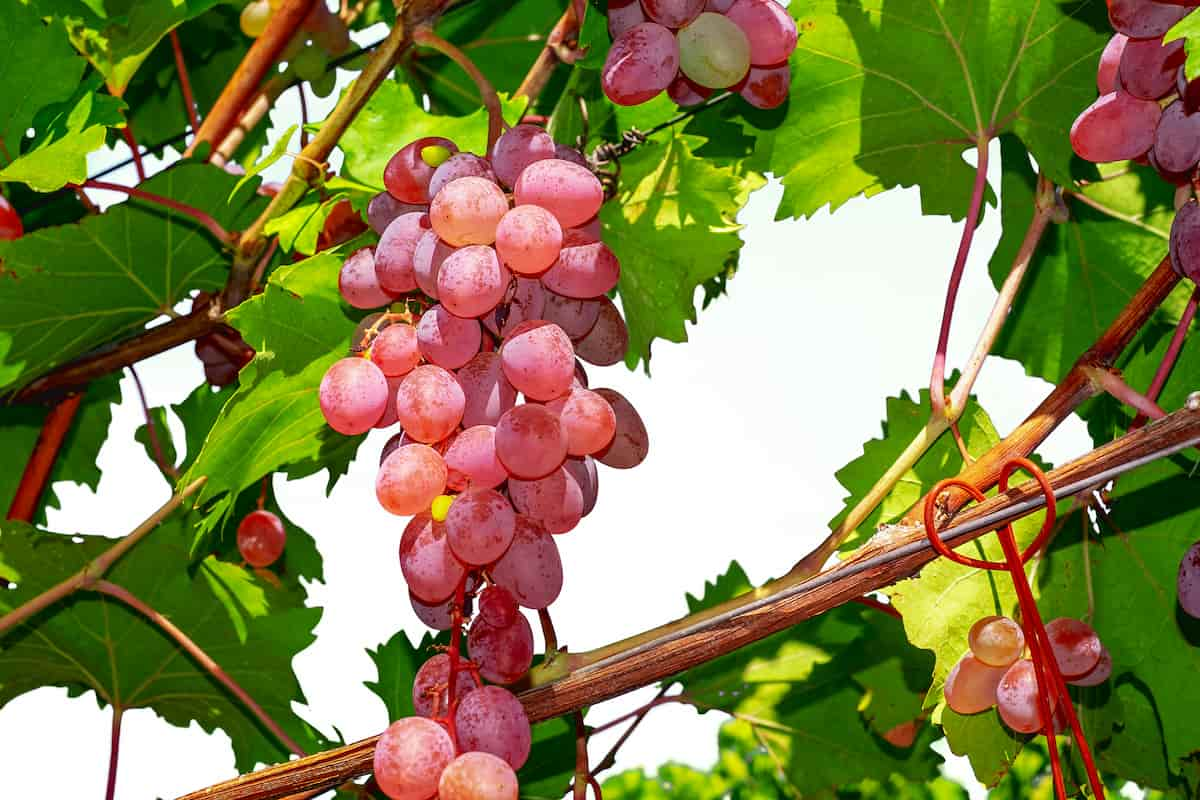
How long does it take to grow Red Globe grapes?
A grapevine’s woody vines and luscious leaves can develop rapidly in its first year. When asked, “how long does it take for grapevines to produce fruit?” the typical response is three years. Pruning practices significantly influence fruit yields. Grapevines are best the first year if you remove any sprouts that come up through the soil. Only the healthiest shoots should be kept, and four should be allowed to grow into the plant’s primary canes.
Use loppers for canes larger than 1/2 inch in diameter, a pruning saw for canes of greater thickness and pruning shears for smaller canes. In the second year, train the canes to grow parallel along a fence or trellis. Get rid of anything in the plant that isn’t the trunk or canes that fall. About a third of each plant should now be untouched. The grapevines will start bearing fruit in the spring after their third year.
Can red grapes be grown in India?
States like Maharashtra, Karnataka, Tamil Nadu, and Andhra Pradesh are known for their thriving grape plantations. Nashik, in the Indian state of Maharashtra, is widely recognized as the world’s premier grape-growing region. Although they all come from the same family, grapes vary greatly in appearance, size, and flavor.
Among the most popular seedless grape varieties, those with a light green texture are the Thompson Seedless and Super Sonaka Seedless, with the dark purple Sharad Seedless coming in third. There is also the popular Red Globe variety. Grapes come in various shapes, colors, and textures, but they all have a similar texture and high-juice content: they are spherical, red, and crunchy.
In case you missed it: How this Farmer Earning 8 Lakhs from 3 Acres Sweet Orange Cultivation – A Success Story of a Mosambi/Sweet Lemon Farmer
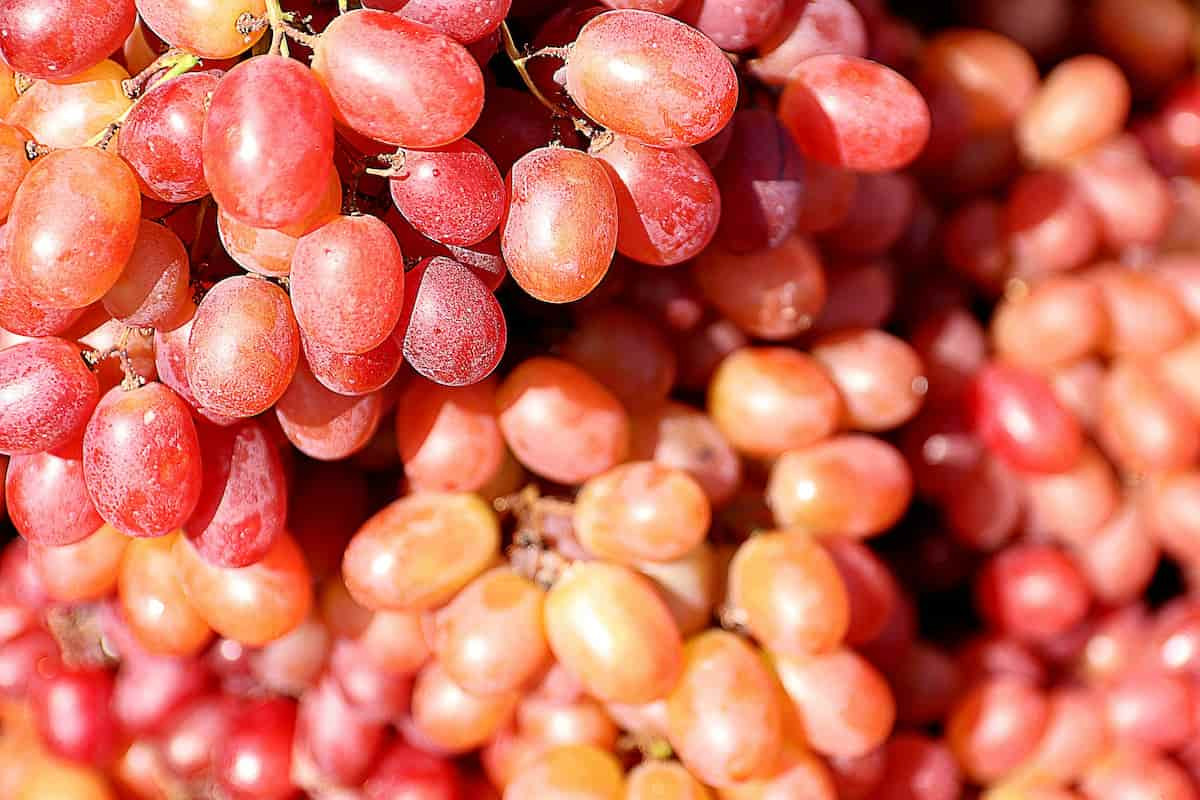
How to store red grapes?
Grapes are delicate and should only be picked when completely ripe, unlike some other fruits. Pick grapes that are wrinkle-free and plump to provide the best flavor. If you like a sweeter flavor, choose green grapes with a golden tint. To prevent ingesting pesticide residue, you should buy grapes from a certified retailer. The shelf life of unwashed grapes can be extended by storing them in a clean bag in the refrigerator. Grapes can be stored in the refrigerator for up to five days, although they taste best when eaten within that time frame.
The success story of Mr. Keshava
Mr. Keshava belongs to the Ananthapur district of Andhra Pradesh. Mr. Eshwarulu owns 6 acres of land and used to cultivate different vegetables on his farm. These vegetables include mostly vining varieties. Even though the profits were good, he wanted to cultivate commercial crops that would get him huge profits. He started investigating different commercial crops and realized that fruit crops are highly profitable when cultivated properly.
He investigated what fruit crops to grow and consulted his district’s horticultural officers. They suggested him a rare grapefruit variety that is getting popular, which is Red Global grape variety. After consulting horticultural officers, he took one month gap and learned all the ways and techniques to grow these crops. When he learned about the market, he was amazed to know about the profit potential of the Red Globe Grape variety crop. He immediately decided to start his venture, that too, by organic means.
Mr. Keshava started his Organic Red globe Grapes farm and saw huge profits just after the second harvest. He became a reputable farmer in his village, and many came to him seeking his advice. How is this possible? Below we will see about Mr. Keshava’s organic Red Globe grape farm, the cultivation details of Red Globe grapes, Mr. Keshava’s experiences while cultivating the crops, and the investment and profits involved in Red Globe Grape crop organic cultivation.
In case you missed it: How this Farmer is Earning 24 Lakh from Custard Apple Cultivation: 4 Acres Farming Sucess Story
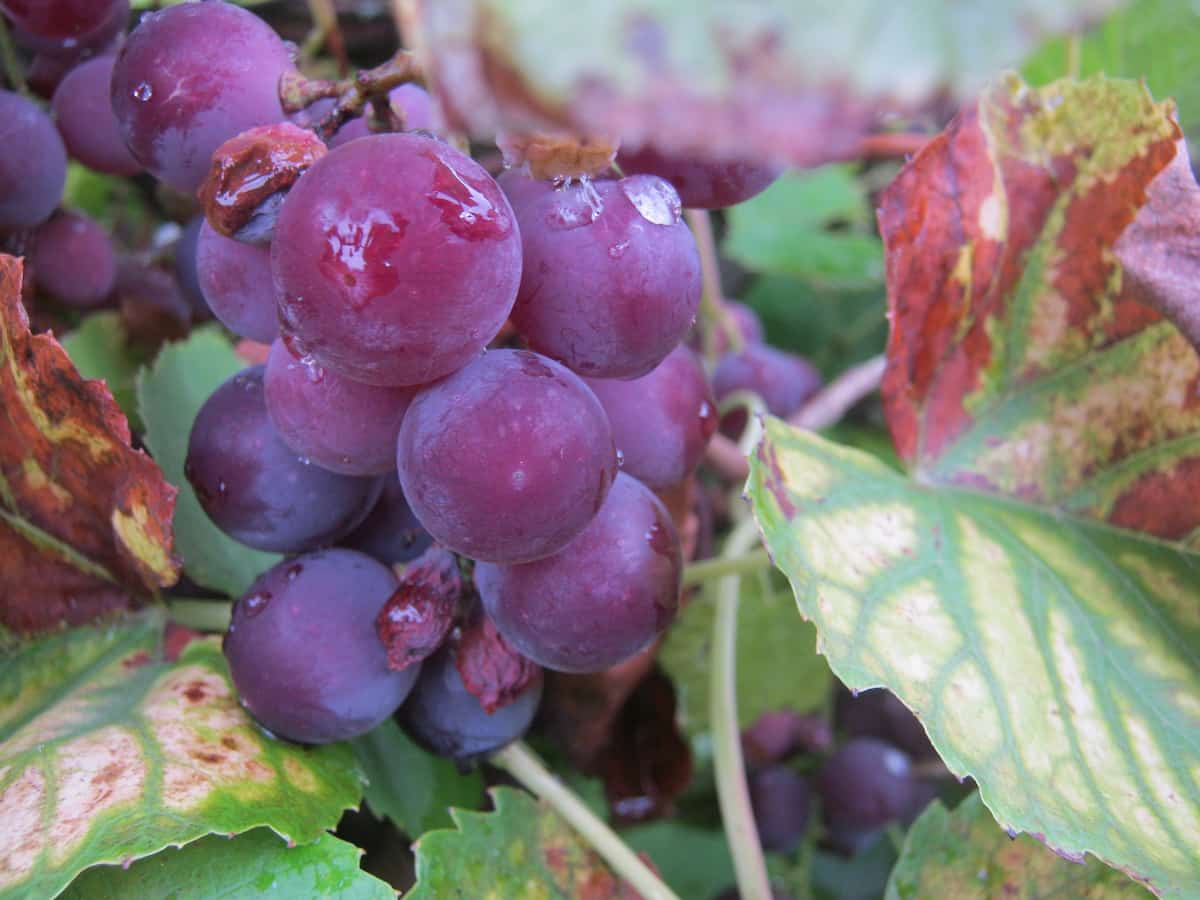
Why Mr. Keshava chose the Red Globe Grape variety to cultivate on his farm?
When asked this question, Mr. Keshava replied that the Red Globe grapes have high demand among the other grapes in the market, and the market price is very high. Even though the cultivation is new to him, he says that the high-profit potential of these fruits motivated him to start his farm. He even says that if a farmer can find a way to sell their harvest to the customers directly, they will even make double the profit. Also, the yield is slightly larger than the normal grape crop.
Organically growing them makes their demand even higher, so he chose organic cultivation. The soil in his land is very fertile, so he says he can organically grow them with ease. In the past, too, he cultivated vegetables by organic method, as the chemicals would make his soil unfertile. Also, these fruits’ shelf life is longer, making them easy to transport to distant places. Considering all these parameters, Mr. Keshava decided to start his Organic Red Globe Grape farm.
Pergola construction details, according to Mr. Keshava
To cultivate grapes, one must need a pergola. Grapes are vining fruits, so pergola construction is a must. As Mr. Keshava used to cultivate vining crops, he already has a pergola ready. This made it easy for him to start his grape cultivation. A pergola serves well as a trellis for climbing plants. Among the numerous advantages of this kind of farming are an increase in crop quality, a decrease in the use of pesticides, and optimal environmental conditions for fruit development.
A pergola is a structure of poles and wires that support climbing plants like grapevines and other vines. The plant’s leaves will cover the pergola when fully grown. To protect the plant’s water supply from evaporation, a pergola’s leaves take in light from above and block it from below.
In case you missed it: How this Farmer Earning 30 Lakhs from Papaya Cultivation in 6 Acres: An Indian Farmer Success Story
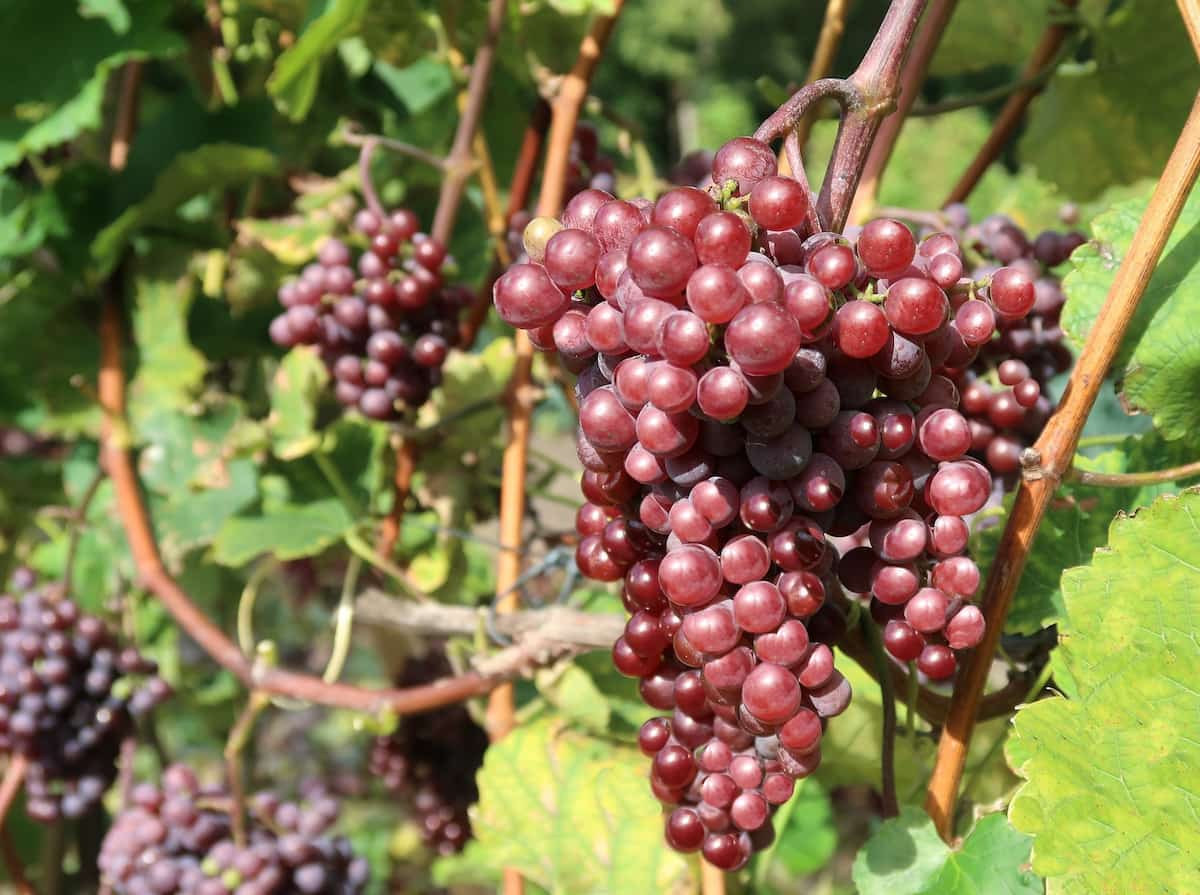
Mr. Keshava used stone poles to construct a pergola on his one-acre property plot. There is a row of poles every 8 feet in height. Then, he hung plastic wires between the stone poles to make a pergola. The distance between rows of poles is 15 feet. This accounts for an 11-foot gap between each pole in a row. Mr. Keshava claims that a well-maintained pergola can continue to serve its purpose for up to 20 years after its construction.
The small one-time expense of constructing a pergola outweighs its many advantages over time. The government can reduce the cost of constructing a pergola by up to 50%. Make your subsidy request to the agriculture office in your district or Mandal. As the cost was low and the lifespan was lengthy; therefore, he opted for stone poles.
Organic Red Globe Grape cultivation details, in Mr. Keshava’s words
Before starting this crop, one must learn fully about the different techniques to cultivate the crop, says Mr. Keshava. He bought the saplings from Chikkaballapur city, Karnataka. He planted nearly 900 crops per acre. He bought each crop at 40 rupees each. Red soils are ideal for Red Globe cultivation, says Mr. Keshava. Mr. Keshava uses a drip irrigation system on his grape farm. He says this irrigation system is ideal for this crop cultivation, as it reduces water wastage and promotes effective crop watering.
Red Globe Variety uses water at the time of fruiting. Each plant will require 20 to 25 liters of water, says Mr. Keshava. Watering should be done twice a day. After the harvest, these plants don’t need much water, says Mr. Keshava. These crops will need a high amount of water for the first three years. Each plant should pant two drippers. When it comes to fertilizers, Mr. Keshava never uses any chemical fertilizer. He only uses animal manure, chicken manure, cow manure, neem cake, castor cake, sugar cake, and worm castings as fertilizers on his farm.
This makes his farm 95 percent organic. He says that he never used any chemicals in his land, so his land is always fertile. He even says that growing his crops organically saves him a lot of fertilizer and pesticide costs, making his harvest high in demand. At the time of pruning, you will need experienced laborers. Pruning for this crop is a bit different when compared to normal crops. On Mr. Keshava’s farm, he brought laborers from Maharashtra during pruning and even cared for their food and accommodation for one month.
This cost him a bit more labor than usual for anyone who chose to start this farm, and he advises keeping this labor cost in mind. Mr. Keshava used row covers on his farm to prevent his crop from pest attacks and sunlight. Thrips are a major pest infestation for this crop, and this can be avoided 70 percent by using row covers for the remaining; Mr. Keshava sprays sour curd solution on his plant to avoid thrips.
He added that it could take nearly 30,000 rupees per acre to install row covers on one’s farm. As he grows his crops in the organic method, he never uses chemicals. However, if pest infestation goes out of hand, he says he should be ready to use chemicals to save his crop. He also uses a separate handmade mixture to prevent downy mildew on his farm.
In case you missed it: How this Farmer Made 42 Lakhs from 5 Acres of Organic Pomegranate Farming: Fruit Cultivation Sucess Story in India
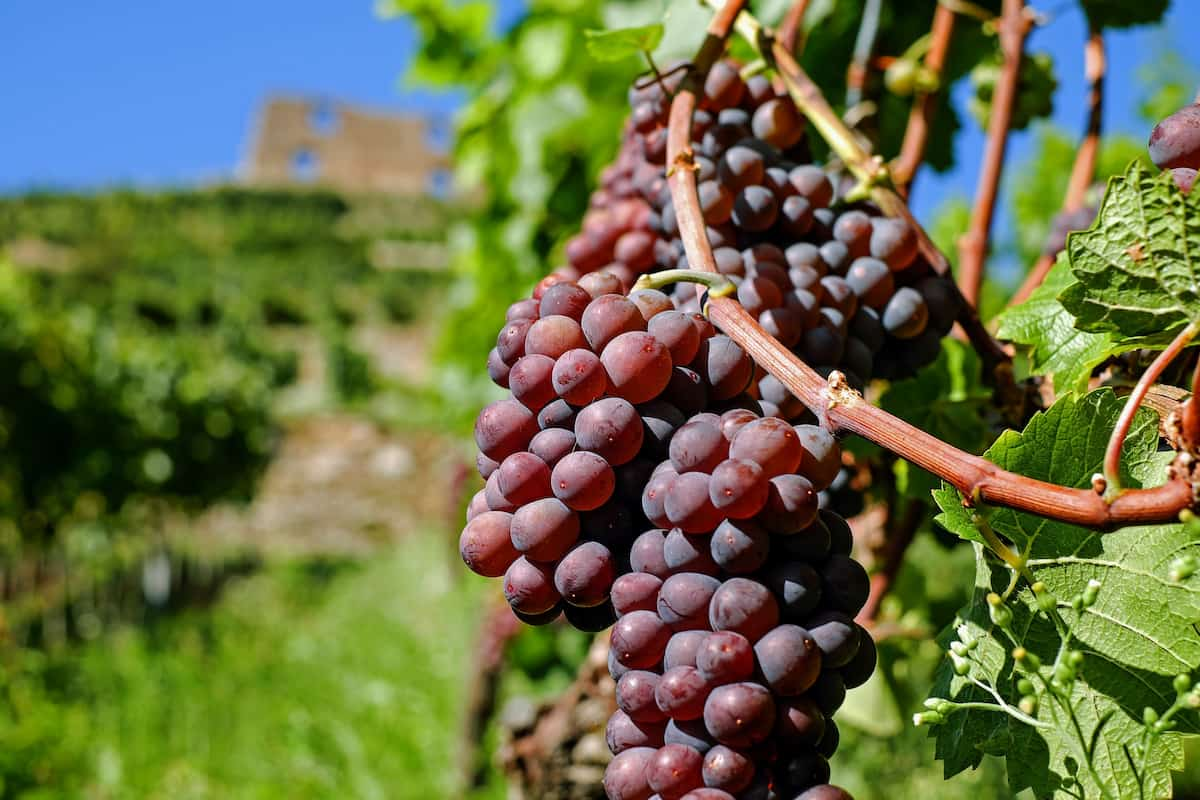
It takes nearly 6.5 lakh rupees per acre to cultivate this crop, says Mr. Keshava. So he advises the small-scale farmers to ignore this fruit variety cultivation as it costs way too high. However, for large-scale farmers, this can be a profitable commercial crop. Per care, you can get nearly 10 to 12 tons of harvest per year.
Harvesting starts from the third year onwards, says Mr. Keshava. Each plant consists of 15 to 20 bunches of fruits. Each bunch can weigh up to 1 to 2.5 kgs, says Mr. Keshava. You can even start intercropping if you don’t want to wait up to 3 years. Different types of short-period vegetable plants can be grown by the intercropping method. Although he doesn’t employ this on his farm, Mr. Keshava says that if anyone wants to grow other vegetables, they can grow them by intercropping.
Investment and profit analysis of Mr. Keshava’s Organic Red Globe Grape farm
Mr. Keshava says he gets nearly 10 to 13 tons of harvest per acre. He sells his harvest at 140 rupees per kg to different dealers. This means his income per year is nearly 16,80,000 rupees on average. When it comes to investment, including pergola cost, labor, and all the other cost, he said that it cost him 6.5 lakh rupees per acre. This means his net profit per acre is nearly 10 lakh rupees.
When we multiply this profit by his whole 6-acre farm, his net profit for the whole farm is nearly 60 lakhs. This way, Mr. Keshava earns huge profits and is happy that he started his Red Globe Grape organic farm. He expects more profit in the next year and is thinking of expanding his farm further. He advises farmers to get into commercial crop cultivation to make huge profits.
- Types of Pesticides Used in Agriculture: A Beginner’s Guide
- Economical Aquaculture: A Guide to Low-Budget Fish Farming
- 15 Common Planting Errors That Can Doom Your Fruit Trees
- How to Make Houseplants Bushy: Effective Tips and Ideas
- Innovative Strategies for Boosting Coconut Pollination and Yield
- Pollination Strategies for Maximum Pumpkin Yield
- The Complete Guide to Chicken Fattening: Strategies for Maximum Growth
- Natural Solutions for Tulip Problems: 100% Effective Remedies for Leaf and Bulb-Related Issues
- Revolutionizing Citrus Preservation: Towards a Healthier, Greener Future
- Natural Solutions for Peony Leaf and Flower Problems: 100% Effective Remedies
- Maximizing Profits with Avocado Contract Farming in India: A Comprehensive Guide
- Natural Solutions for Hydrangea Problems: 100% Effective Remedies for Leaf and Flowers
- The Ultimate Guide to Choosing the Perfect Foliage Friend: Bringing Life Indoors
- From Sunlight to Sustainability: 15 Ways to Use Solar Technology in Agriculture
- The Ultimate Guide to Dong Tao Chicken: Exploring from History to Raising
- The Eco-Friendly Makeover: How to Convert Your Unused Swimming Pool into a Fish Pond
- Mastering the Art of Delaware Chicken Farming: Essentials for Healthy Backyard Flocks
- 20 Best Homemade Fertilizers for Money Plant: DIY Recipes and Application Methods
- How to Craft a Comprehensive Free-Range Chicken Farming Business Plan
- Brighten Your Flock: Raising Easter Egger Chickens for Beauty and Bounty
- How to Optimize Your Poultry Egg Farm Business Plan with These Strategies
- Subsidy for Spirulina Cultivation: How Indian Government Schemes Encouraging Spirulina Farmers
- Ultimate Guide to Raising Dominique Chickens: Breeding, Feeding, Egg-Production, and Care
- Mastering the Art of Raising Jersey Giant Chickens: Care, Feeding, and More
- Ultimate Guide to Raising Legbar Chickens: Breeding, Farming Practices, Diet, Egg-Production
- How to Raise Welsummer Chickens: A Comprehensive Guide for Beginners
- How to Protect Indoor Plants in Winter: A Comprehensive Guide
- Ultimate Guide to Grow Bag Gardening: Tips, Tricks, and Planting Ideas for Urban Gardeners
- Guide to Lotus Cultivation: How to Propagate, Plant, Grow, Care, Cost, and Profit
- Agriculture Drone Subsidy Scheme: Government Kisan Subsidy, License, and How to Apply Online
- Ultimate Guide to Raising Araucana Chickens: Breed Profile, Farming Economics, Diet, and Care
- Bringing Hydroponics to Classroom: Importance, Benefits of Learning for School Students
- Ultimate Guide to Raising Polish Chickens: Breed Profile, Farming Economics, Diet, and Care
- Ultimate Guide to Raising Australorp Chickens: Profile, Farming Economics, Egg Production, Diet, and Care
- Silkie Chicken Farming: Raising Practices, Varieties, Egg Production, Diet, and Care
- Sussex Chicken Farming: Raising Practices, Varieties, Egg Production, Diet and Care
Really good information.